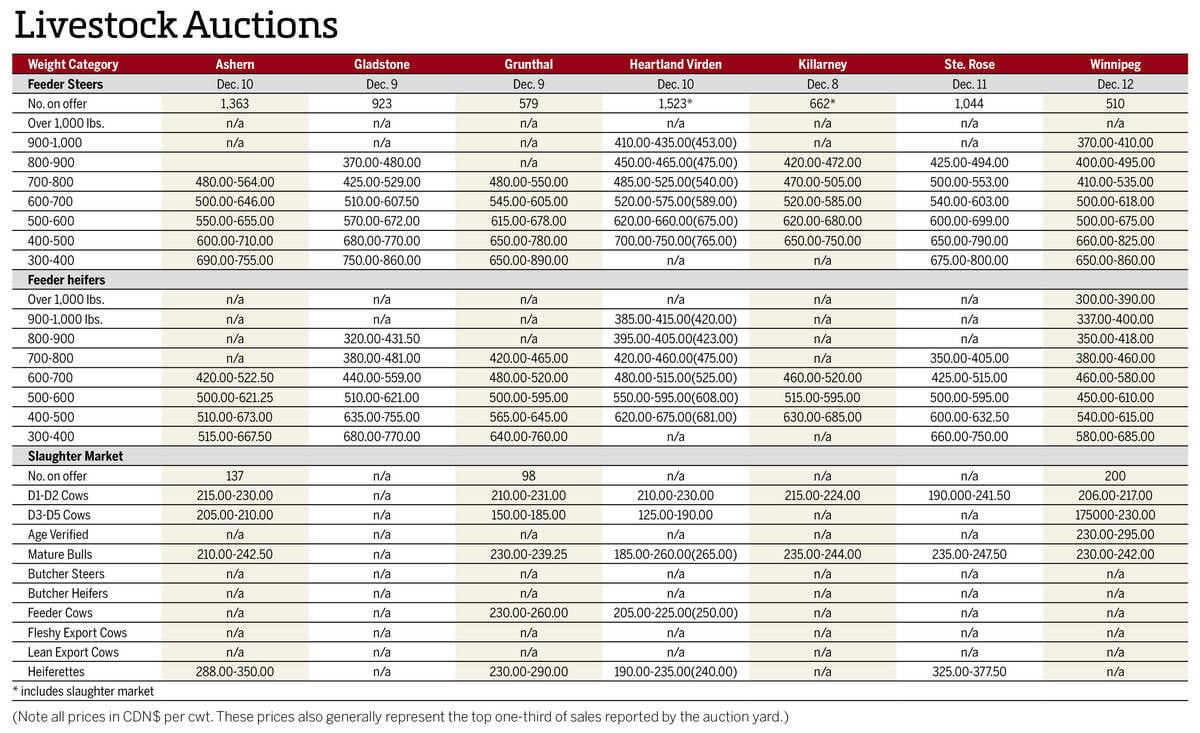Weather conditions through the growing season should provide day-to-day direction for the North American grain and oilseed markets, but larger macroeconomic influences will also be at play.
Interest rates: The Bank of Canada cut its benchmark interest rate by 0.25 points on June 5, lowering borrowing costs for the first time in four years and taking the rate off its two-decade high of 5.0 per cent to 4.75 per cent. The rate cut was largely anticipated but was seen as kickstarting a monetary policy easing cycle.
The European Central Bank followed a day later, cutting its deposit rate to 3.75 per cent from a record 4.0 per cent. All eyes will now be on the United States Federal Reserve.
Read Also

Manitoba cattle prices Dec. 16
Here’s what local farmers were getting paid last week for their cattle at Manitoba livestock auction marts; prices covering the week Dec. 8-12, 2025.
Canadian dollar: It has been trading at the lower end of its longer-term range. Cuts to the Bank of Canada’s lending rates are contributing to that softness. The currency traded below the 73 U.S. cents level during the week, and some analysts expect a test below 70 cents, a level not seen since 2020.
A softer loonie is typically good for some farmgate prices, as it boosts competitiveness of Canadian exports. However, input costs may rise as a result.
Crude oil: Energy markets are tied up with both interest rates and currencies, but also trade off their own supply/demand fundamentals. OPEC+, the Organization of Petroleum Exporting Countries and its allies, have an outsized influence on oil prices. The group has said it will extend production cuts through 2025, which would keep oil prices high, but it also left the door open for some members to unwind voluntary production cuts.
West Texas Intermediate crude oil fell below US$74 per barrel for the first time in four months during the first week of June but was back above $75 a few days later, as traders try to get a better handle on OPEC+ intentions.















